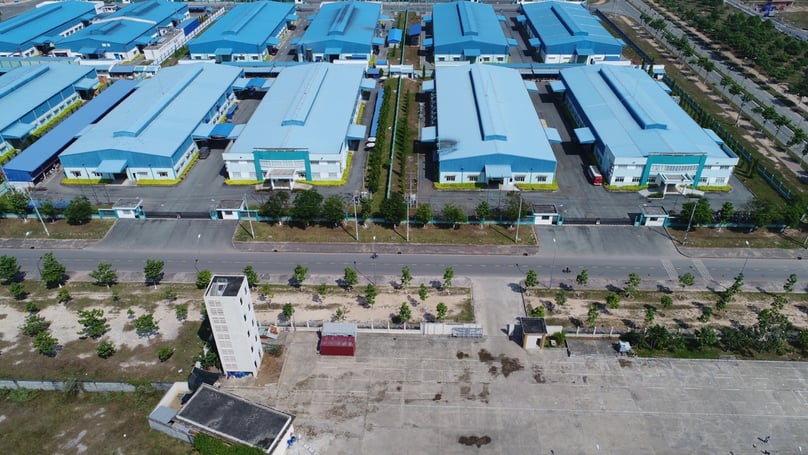
With India’s vision of becoming an international manufacturing hub and a $5 trillion economy, the creation of plug-and-play industrial parks is becoming an essential tool to fuel economic growth, investment, and job creation.
The parks, with pre-established infrastructure in the form of roads, power, water, and connectivity, allow companies to launch operations quickly, avoiding typical setup challenges.
With the recent emphasis by the government on such parks, experts say it is critical to increase their size to address India’s industrial and urbanization needs.
India’s manufacturing sector has huge bottlenecks to overcome, such as long setup times, regulatory delays, and poor infrastructure. Conventional industrial arrangements typically have to go through complicated land acquisition procedures, obtain environmental clearances, and establish utilities, which take years.
Plug-and-play industrial parks overcome this by providing turnkey facilities, where companies don’t need to even design the infrastructure since it is already prepared.
Finance Minister Nirmala Sitharaman in the Union Budget 2024-25 proposes developing 100 such parks in or near 100 cities as public-private partnerships, along with another 12 new parks under the National Industrial Corridor Development Programme (NICDP).
These parks are integrated to improve manufacturing and help India’s ‘Make in India’ initiative. For example, smart cities such as Dholera Smart City in Gujarat, where industry and urban planning are combined, provide multimodal connectivity by rail, road, and metro and hence prove to be appealing for domestic and international investors.
The NICDP will create about 1 million direct and 3 million indirect jobs, solving the unemployment problems of India, especially in Tier 2 and Tier 3 cities where local youths can access job opportunities without having to migrate to metros.
Small and medium enterprises (SMEs), who are the backbone of India’s economy, will gain a lot. Facilities like Bhumi World Industrial Park in Bhiwandi-Thane offer MSMEs inexpensive, plug-and-play space, allowing them to expand operations without capital outlay for constructing infrastructure.
In West Bengal, facilities such as Magna Star Industrial & Logistics Park are Vaastu-designed and green-friendly, enticing businesses looking for efficiency and long-term returns.
These parks also promote employment generation and local economy stimulation by catering to industries like manufacturing, logistics, and warehousing.

Yet, India’s industrial park ecosystem today is not without limitations. Few of them, like Mahindra World City in Chennai or Reliance’s integrated park in Navi Mumbai, are functioning at scale.
The failure of Special Economic Zones (SEZs) provides a lesson: more than 60% of SEZs were IT- and electronics-based instead of manufacturing-based, and some did not have good-quality infrastructure, which restricted their economic value.
Environmental issues, like pollution and resource pressure, also present problems, as in some industrial parks that created traffic jams or environmental degradation.
To mitigate these challenges, experts are calling for sustainable and planned parks.
The NICDP is consistent with the PM Gati Shakti National Master Plan, with a push for multimodal connectivity to facilitate greater movement of goods and individuals.
Parks such as ESR Group’s logistics parks give high importance to green initiatives, including solar power and energy-efficient construction, to minimize environmental footprints. Simplified rules, single-window clearances, and fiscal relief in the form of tax rebates further improve the attractiveness of such parks.
India’s fast urbanization, where more than 500 million individuals will find themselves dwelling in cities, highlights the urgency of this project.
Plug-and-play parks that are integrated with residential complexes, as in the case of Greater Noida’s Integrated Industrial Township, ensure a “walk-to-work” system, smaller carbon footprints, and a better quality of life.
Through experience from previous errors, including the SEZ model’s emphasis on tax breaks at the expense of infrastructure, India can establish a system of industrial parks that propel sustained growth.
The government’s pledge to create 100 plug-and-play parks is a positive step towards making India a world manufacturing hub.
As Commerce Minister Piyush Goyal observed, the parks will be for both big units and MSMEs, and with this, exports can be taken up to $2 trillion by 2030.
But success depends on managing land acquisition issues, remaining environmentally compliant, and building state-private sector partnerships.
With strategic implementation, plug-and-play industrial parks have the potential to revolutionize India’s industrial map, building buzzing economic centers that lift up communities and propel forward.
